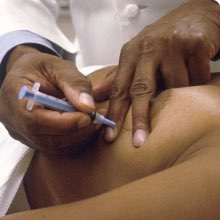Prof. M.N. Huda is the Best Dermatologist in Bangladesh. He known as Best Dermatologist in South Asia. This world- renowned doctor has bagged the overflowing respect and love for his excellent work and selfless services in health care sector. He is not just an Skin Specialist in Dhaka but a Renowned Professor of Dermatology & Venereology. He is also provide best Hair Treatment in Bangladesh
WHAT YOU NEED TO KNOW:
An excisional breast biopsy is a surgical procedure to remove a breast lump. This procedure also known as a lumpectomy. An excisional breast biopsy done to diagnose one or more lumps in the breast. The tissue sample will sent to a laboratory for analysis. Most breast tumors benign (not cancerous).
WHILE YOU ARE HERE:
Before the Excision Biopsy:
- Informed consent is a legal document that explains the tests, treatments, or procedures that you may need. Informed consent means that you understand what is going to be done and that you can make decisions about what you want. You give your permission by signing the consent form. You can designate another person to sign this form for you if you are unable to do so. The right to understand your health care in terms or words that you can understand. Before signing the consent document, understand the risks and benefits of what will be done to you. Make sure all your questions are answered.
- An IV cannula is a small tube that is put into a vein and used to give medicine or fluids.
- Heart monitor: Also known as ECG or EKG. Adhesive patches placed on your skin record the electrical activity of your heart.
- Pre-op care: You may have an ultrasound or mammogram before the procedure to find the exact location of the lump. An ultrasound is a test that uses sound waves to view the inside of your breast on a screen. Doctors may use a guide to show the location of the lump. They will put a needle and guide it through your skin until it reaches the place where the lump is. A mammogram will be done after the guide is in place to make sure it is in the right place. You may be given medicine to make you feel relaxed and sleepy right before your surgery.
- Anesthesia:
- Local or controlled anesthesia: This is an injection of a medicine that is placed into the skin where the procedure will be done. You may still feel pressure or discomfort during the procedure, but you should not feel pain. With local anesthesia, you stay awake during the procedure. With supervised anesthesia, you will also given IV medication. This medicine makes you feel comfortable, relaxed, and sleepy during the procedure.
- General anesthesia will keep you asleep and pain-free during surgery. You may given anesthesia through an IV. Or you can breathe it in through a mask or tube that placed down your throat. The tube can make your throat feel sore when you wake up.
During the procedure:
The doctor will make an incision in your breast and remove the lump. He will also remove a margin, which is a small amount of tissue around the lump. The tissue sent to a laboratory for tests. Caregivers may take an X-ray of the tissue they removed to make sure they have removed all of the lump. The incision will closed with stitches and the wound will covered with a bandage. The bandage will keep the area clean and dry to help prevent infection.
After the Excision Biopsy procedure:
You may taken to a room where you can rest. Caregivers will check to see if your wound is bleeding. Do not get out of bed until your doctors say it is okay. Doctors will tell you when you can go home.
- Pain relievers : You may prescribed a medicine to relieve pain. Do not wait until your pain is very bad to ask for more medicine.
- Ice: Caregivers may put ice on the wound to ease pain or reduce swelling.
RISKS of Excision Biopsy:
- You could have an allergic reaction to the anesthesia used for the procedure. The entire lump may not removed with the excisional biopsy, and another biopsy may be needed. If a guide used to locate the package, the guide could slip out of place. The nerves near the breast may damaged during the procedure, causing less sensation in your breast. You may feel pain in the area where the biopsy done after the procedure. You may have nausea, vomiting, weakness, and dizziness. The wound may bleed, bruise, and the breast may swell, and you may also get an infection. The breast may change shape after the lump removed.
- If you don’t have an excisional breast biopsy, you won’t be able to tell if the lump is cancerous. Breast cancer could spread to other areas of your body and be life-threatening.
Further information
Always consult your healthcare provider to ensure the information displayed on this page applies to your personal circumstances.
